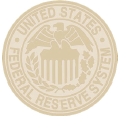Economy

Trade Worries Mute Global Manufacturing
Written by Sandy Williams
November 4, 2018
Global trade protectionism and political uncertainty weighed heavily on manufacturing in October. Manufacturing slowed to its lowest level in almost two years, according to the J.P. Morgan Global Manufacturing PMI. The headline index registered 52.1, down from 52.2 in September. Weaker increases in new business and a contraction of new export orders muted production growth during the month.
Export orders fell in China, South Korea, the UK, Taiwan, Brazil, Turkey, Indonesia, Poland and Thailand. New export orders in the U.S. were at near stagnation rates in October.
Intermediate and investment goods industries were at their lowest PMI readings in two years, contrasting with a four-month high for consumer goods.
Input costs increased slightly, while the rate of increase in selling prices was at a seven-month low.
Eurozone manufacturing continued its downward trend in October. Posting a PMI of 52, the index fell for the third month in a row. Demand sank as worries about the global economic environment, trade war, political uncertainty and rising prices intensified. Net production in the region grew modestly, but weak order demand led to a marginal rise in warehouse inventory and lower backlogs. Business confidence was at the lowest level since the end of 2012, said IHS Markit.
“Concerns about the Eurozone manufacturing sector intensified at the start of the fourth quarter,” commented Chris Williamson, Chief Business Economist at IHS Markit. “The headline PMI fell to its lowest since August 2016, signaling a further slowing in the rate of expansion. New orders fell into decline for the first time in almost four years as trade woes escalated. Export sales fell for the first time in over five years. Moreover, the survey suggests that the manufacturing sector could contract in the fourth quarter unless the data revive in coming months. However, with backlogs of work falling for a second successive month, and business expectations sliding to the lowest for nearly six years, risks seem firmly tilted towards the downside heading towards the end of the year.”
Production in China was flat in October with new business registering only a slight rise for the month. The Caixin China General Manufacturing PMI posted a reading of 50.1 from September’s reading of 50.0. New order growth was sluggish and new export business fell for the seventh consecutive month. Input costs accelerated at a faster rate than selling prices. Sentiment was at an 11-month low as firms expressed concern over market conditions and the China-U.S. trade dispute.
Manufacturers in Russia saw business activity gain momentum in October with solid and accelerating growth in output, new orders and export business. The IHS Markit Russia Manufacturing PMI rose from the neutral 50.0 reading in September to register 51.3 in October. Increased production drove input buying and supported higher employment levels. Price inflation softened and cost burdens were passed on to clients. Business confidence was at its highest level since May 2015.
The Nikkei South Korea Manufacturing PMI was above the neutral 50.0 level for its second month, posting at 51.0 in October. Output and employment levels grew, but new order growth was marginal. The competitive pressures led manufacturers to cut prices despite higher input costs
“At face value, the latest PMI survey presented a further month of positivity for the South Korean manufacturing economy. Output and employment growth were the key drivers behind another relatively solid outturn, despite paces of expansion easing in both cases,” said Joe Hayes, economist at IHS Markit, “Meanwhile, against the backdrop of rising trade tensions, survey data indicated that the downturn in export markets continued in October. Forecasts of challenging economic conditions globally and domestically suppressed the business outlook, with confidence remaining at a historically weak level.”
The IHS Markit Canada Manufacturing PMI dipped to 53.9 in October from 54.8 in September for the weakest improvement in manufacturing conditions since January 2017. Lower output and new business growth were attributed to the PMI decrease. Despite subdued domestic and export demand, employment levels increased as firms looked toward expansion plans and capacity increases. Firms surveyed noted that steel tariffs and rising transportation costs added to higher input prices in October. Firms were positive overall regarding future business conditions, but sentiment fell to its lowest level since November 2016 with survey respondents citing global trade issues as the reason.
The manufacturing PMI in Mexico fell to 50.7 in October from 51.7. New product launches helped improve sales, but outages and inventory shortages made the production growth slower than in September.
“The Mexican manufacturing industry showed signs of cooling in October, as lackluster demand and an uncertain economic outlook hampered production, hiring and input purchasing,” said Pollyanna De Lima, Principal Economist at IHS Markit. “Exports fared better than total new work as the relatively weak peso continued to make Mexican goods more attractive, price-wise, in international markets. Although the burden of cost pressures moderated, purchasing activity was held back by the faltering performance of supply chains as scarcity of some critical raw materials and delays in ports were reported. Uncertainty also remains a break on growth and the upcoming months will be a waiting game for goods producers longing for more stable conditions.”
While the rest of the world seems to be slowing down, manufacturing firms in the United States saw accelerating momentum from new orders and production. The IHS Markit U.S. Manufacturing PMI rose to a healthy 55.7 in October for a five-month high. Domestic orders also reached a five-month high, but new export orders were relatively flat. Margin pressure was noted as input price inflation quickened last month. Tariffs were blamed for higher raw material prices and metal pricing. Employment numbers jumped as firms added staff to meet workload demand.
“The manufacturing sector saw a strong start to the closing quarter of 2018, with new order inflows rising sharply and business optimism spiking higher in an encouraging sign that firms expect the good times to continue into 2019,” said Williamson at IHS Markit. “The key area of concern remained tariffs, which were widely reported to have contributed to another month of stalled export sales and a steep rise in prices for many inputs. Average input prices rose at one of the sharpest rates seen over the past six years in October. In a clear sign that inflationary pressures are continuing to build, strong customer demand meant firms were often able to push cost increases through to selling prices. Average prices charged for goods leaving the factory gate consequently jumped to one of the greatest extents seen since mid-2011.”

Sandy Williams
Read more from Sandy WilliamsLatest in Economy

US construction spending slips in July
Construction spending in the US in July was slightly lower than June. Despite the decline, it increased notably year on year (y/y).

Beige Book: Economic growth hit by tighter consumer spending
Growth in the US economy continues to struggle in most districts. The Federal Reserve’s Beige Book report for August shows two-thirds of reporting districts flat or declining economic activity.

Steel Summit 2024: Dr. Basu predicts near-term weakness in US economy
“The US economy, despite some near-term weakness I suggest in early 2025, is going to be strong," Dr. Anirban Basu said this week.

Chicago Business Barometer ticked up in August, remains low
The Chicago Business Barometer edged up in August but remains in contraction territory, according to the latest release from Market News International (MNI) and the Institute for Supply Management (ISM).

ABI remains soft despite July gains
The July AIA ABI score has recovered nearly six points over the last two months following the near four-year low recorded in May
